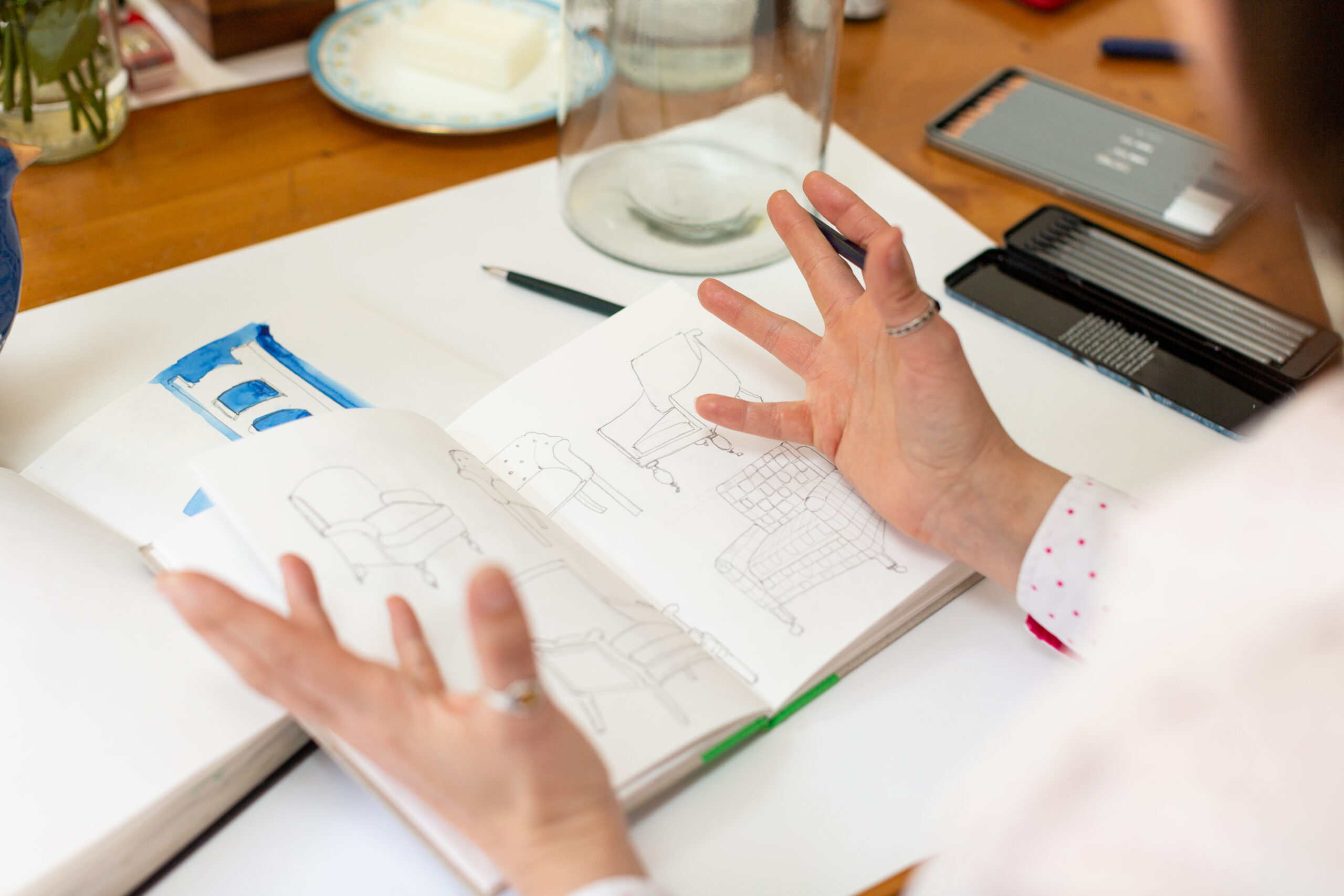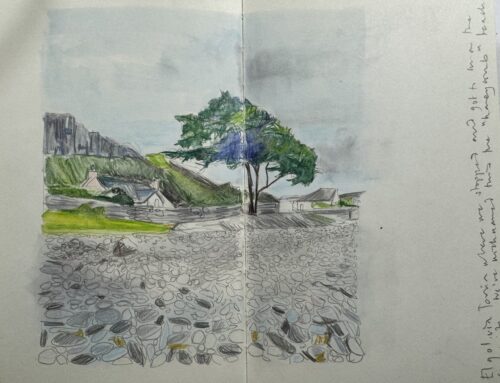I feel I need to start this blog post with a disclaimer that I am far from an expert in any of the science linking dyslexia and drawing.
There is something interesting though about how we approach drawing from a variety of different personal viewpoints and angles, especially from a cognitive viewpoint.
In working through the processes involved in learning to draw without an arts background and then founding a network of people wanting to learn to do the same, my underpinning driver to all I do is a simple conviction that anyone and everyone can draw!
This conviction is underpinned by the simple fact that I teach a process. A step by step approach. The process is the same for everyone. But how you are able to absorb your understanding of that process and what extra route maps you might need is at the heart of the conversation I am starting in my membership hub on this subject.
Whatever your age, level of ability or disability, or understanding when you first come into it, provided that you are given the right tools and are able to grasp the concepts, the practice of drawing is available to all. Dyslexia and drawing can actually become comfortable bed fellows. The starting point, however, is becoming consciously aware of the challenges you are facing.
Earlier this year a lovely student of mine, Lesley, came into my Scratch to Sketchbook programme.
“Do you know anything about dyslexia?” asked Lesley in an email, “I don’t want to bamboozle you with lots of information if you are familiar with the traits of dyslexia?”
I stopped and looked up and remember feeling a slight pang in the pit of my stomach as I realised I didn’t know much about this condition and probably would need to be bamboozled!
“No” I responded. “No real idea about dyslexia and drawing. Might you share your experience?”
I didn’t know much about this condition to be honest, especially in relation to drawing.
With Lesley’s help, what I then started uncovering was actually encouraging. She spent time talking to me about the impact dyslexia has on her ability to process what she is learning.
You can catch the full conversation with me in the Be Well. Drawing for Well Being Hub of my Scratch to Sketch membership hub.
Lesley was diagnosed at 50. Many may never be diagnosed but still struggle with some of the challenges she faces. Do let me know if any of the below characteristics resonate with you?
(And if they do…know that they are surmountable.)
Dyslexia is a learning difference that primarily affects a person’s ability to read, write, and spell. While dyslexia is primarily associated with difficulties in language-related tasks, it can indirectly impact drawing skills due to the underlying cognitive processes involved.
It’s important to note though that dyslexia affects individuals differently, and not all dyslexic individuals will experience the same challenges in drawing.
Here are some ways dyslexia may impact drawing abilities:
- Spatial perception: Dyslexia can affect an individual’s spatial perception. It can be more challenging to accurately perceive and represent spatial relationships and proportions in drawings. This difficulty may manifest as struggles with perspective, size, and symmetry.
(I had to smile when I was reading this as I find that this applies to the majority of people starting out on the learning journey. We all struggle with spatial perception – I most certainly did!)
- Fine motor skills: Some individuals with dyslexia may experience challenges with fine motor skills, which can affect their ability to control the movements of their hands and fingers. This difficulty may make it harder to execute precise and detailed drawings or maintain consistent lines and shapes. Again, this highlighted to me that the very basic entry level drawing principle of mark makings is essential to start “training” the brain to connect to the fingers. Doodle if you will! Practice just drawing lines and shapes and random marks on a page. None of it is wasted.
- Visual processing: Dyslexia can also affect visual processing skills, such as visual sequencing and visual memory. These difficulties may impact the ability to accurately observe and reproduce visual information, leading to challenges in creating accurate representations. Lesley shared with me how she “gets lost” when we work on drawing subjects. She cannot remember how to arrange the step by step approaches or will start but then forget where she needs to be. Rather than a linear step by step approach there needs to be a more wholistic, perhaps, intuitive process that needs to be implemented.
- Planning and organisation: Dyslexia is often associated with difficulties with planning, organisation, and sequencing. These challenges can affect the ability to plan and structure a drawing effectively, resulting in less coherent or organised compositions.
Despite these potential challenges, it’s important to remember that dyslexia does not inherently diminish artistic talent or creativity.
Many dyslexic individuals excel in art and drawing, leveraging their unique perspectives to create compelling and imaginative artwork. Supportive environments, and tailored learning can further help individuals with dyslexia overcome specific challenges and nurture their artistic skills.
There are several famous artists who have been diagnosed with or reported to have dyslexia, a surefire sign that this condition does not hinder creativity and artistic talent.
Here are some well-known dyslexic artists:
- Leonardo da Vinci: The renowned Italian Renaissance artist, inventor, and polymath, Leonardo da Vinci, is believed to have had dyslexia. His ability to think outside the box and his innovative ideas are characteristic of many dyslexic individuals.
- Pablo Picasso: The Spanish painter, sculptor, and co-founder of the Cubist movement, Pablo Picasso, is another artist often associated with dyslexia. He struggled with traditional academic subjects but excelled in artistic expression.
- Auguste Rodin: The French sculptor Auguste Rodin, known for his iconic works such as “The Thinker” and “The Kiss,” was also dyslexic. Despite experiencing difficulties with conventional education, he found solace and success in the world of art.
These are just a few examples of famous dyslexic artists who have made significant contributions to their respective fields. Dyslexia does not limit one’s ability to excel in creative endeavors, and these individuals are a testament to that.
If you are interested in drawing and feel that you struggle with a condition such as dyslexia I have gone away and produced a top tip guide that you may find helpful when it comes to navigating a drawing habit. What practical steps can you take when learning to draw when you have dyslexia?
This guide is part of Emily’s Notebook Be Well, Drawing for Well Being Hub which you can find out more about via the Scratch to Sketch Hub membership. You can also watch my conversation with Lesley that started the discussion on the subject!
See you soon and drop me a line if this article resonated with you.







